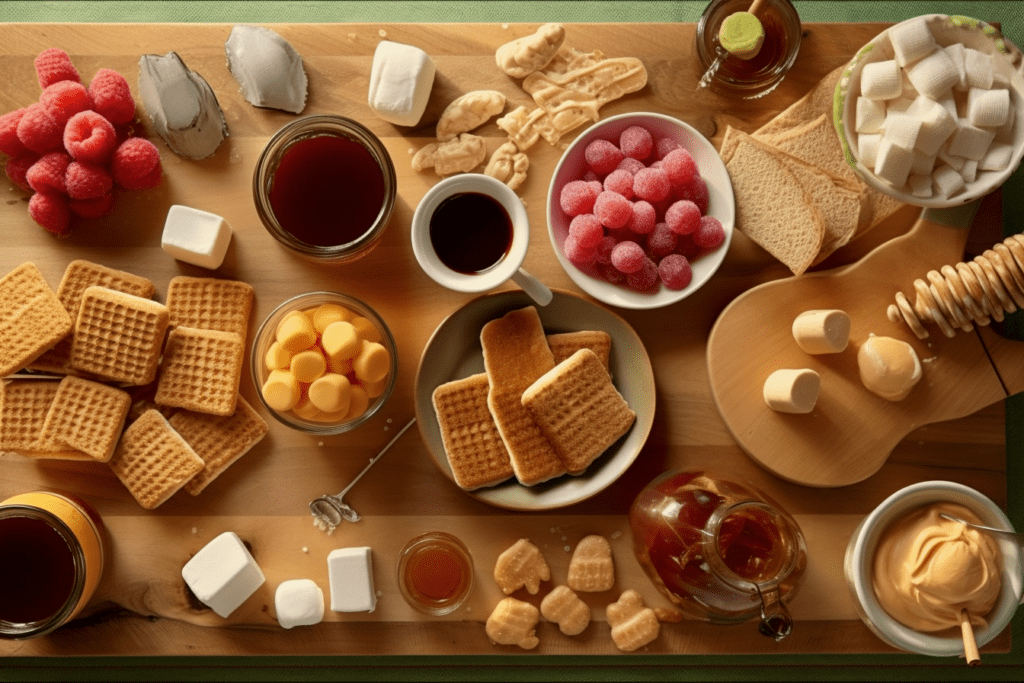As your baby grows and develops, there comes a time when they are ready to transition from breast milk or formula to solid foods. This exciting milestone can be rewarding and challenging for new parents as they navigate the ins and outs of introducing their little ones to new tastes and textures. If you’re feeling overwhelmed or unsure how to introduce solid foods to your baby, you’re not alone.
Fortunately, plenty of resources are available to support you and your baby through this transition. If you’re in Houston, Motherhood Center is a great place to start. They offer a variety of classes and services designed to help parents navigate the early stages of parenthood. From baby food introduction classes to lactation consultations, their team of experienced professionals can help guide you through the ups and downs of motherhood.
In this comprehensive guide, we’ll cover everything you need to know about transitioning your baby to solid foods, including signs that your baby is ready for solids, the best first foods to try, how to introduce solids to your baby, what to avoid, how to progress your baby’s solid food intake, and common issues you may encounter along the way. With the help of this guide and the resources available at Motherhood Center, you’ll be well on your way to successfully introducing solid foods to your baby.
When to Start Introducing Solid Foods
 One of parents’ most common questions when introducing solid foods is when to start. The American Academy of Pediatrics (AAP) recommends that babies be exclusively breastfed for the first six months of life and that solid foods be introduced gradually around six months of age. However, every baby is different; some may be ready for solids a little earlier or later than others.
One of parents’ most common questions when introducing solid foods is when to start. The American Academy of Pediatrics (AAP) recommends that babies be exclusively breastfed for the first six months of life and that solid foods be introduced gradually around six months of age. However, every baby is different; some may be ready for solids a little earlier or later than others.
Signs Your Baby is Ready for Solid Foods
While there’s no one-size-fits-all answer to when you should start introducing solid foods, there are some signs that your baby may be ready to take the leap. Here are some things to look out for:
Age
Most babies are ready to start trying solid foods between 4 and 6 months of age. However, every baby is different, so it’s important to pay attention to your baby’s signs of readiness.
Head and neck control
Your baby should be able to hold their head up and sit upright with support. This is important for safe swallowing and digestion.
Interest in food
If your baby watches you eat with interest, reaches for your food, or seems curious about what’s on your plate, it may be a sign that they’re ready to try solid foods.
Loss of tongue-thrust reflex
At birth, babies have a natural reflex that pushes food out of their mouths with their tongues. When this reflex starts to fade, usually around 4 months of age, it may be a sign that your baby is ready to try swallowing solid foods.
Increased appetite
If your baby seems hungry more frequently or isn’t satisfied with their usual feedings, it may be a sign that they’re ready for something more substantial.
By paying attention to these signs, you can determine whether your baby is ready to start trying solid foods. However, it’s important to keep in mind that every baby develops at their own pace, so don’t feel like you need to rush the process. If you’re unsure whether your baby is ready, talk to your healthcare provider for guidance.
Best First Foods for Your Baby
 When introducing solid foods, it’s important to start with simple, easy-to-digest foods that are unlikely to cause allergic reactions. Here are some of the best first foods to try:
When introducing solid foods, it’s important to start with simple, easy-to-digest foods that are unlikely to cause allergic reactions. Here are some of the best first foods to try:
Single-grain cereals
Fortified rice cereal is often recommended as a first food because it’s easy to digest and unlikely to cause allergic reactions. Mix it with breast milk, formula, or water to create a thin, soupy texture that’s easy for your baby to swallow.
Pureed vegetables
Soft, cooked vegetables like sweet potato, carrot, and squash can also be good first foods. Puree them until smooth and thin, and mix them with breast milk, formula, or water to create the right texture.
Pureed fruits
Soft fruits like bananas, avocados, and pears can also be good first foods. Puree them until smooth and thin, and mix them with breast milk, formula, or water as needed.
Soft, cooked meats
Once your baby has tried a few different fruits and vegetables, you can introduce small amounts of soft, cooked meats like chicken or turkey. Make sure to puree or finely chop the meat to make it easier to swallow.
Yogurt and cheese
If your baby has tried a variety of fruits, vegetables, and meats without any issues, you can start introducing small amounts of plain, whole-milk yogurt or cheese. These foods provide important nutrients like calcium and protein.
When introducing solid foods, it’s important to start with just a small amount (about a teaspoon or two) and gradually increase the amount over time as your baby gets used to the new textures and flavors. Make sure to offer new foods one at a time and wait a few days before introducing another new food, so you can monitor for any signs of allergic reactions.
How to Introduce Solid Foods to Your Baby
Introducing solid foods should be a gradual process. Here are some tips to help make the transition smooth:
Start with a small amount
When introducing solid foods, start with a small amount – around a teaspoon or two – and gradually increase the amount over time. This will allow your baby to get used to the new texture and flavor of the food.
Offer foods one at a time
To make it easier to identify any potential food allergies, it’s a good idea to offer new foods one at a time. Wait a few days before introducing another new food, so you can monitor your baby for any signs of an allergic reaction.
Be patient
Some babies take to solid foods right away, while others need more time to get used to the new textures and flavors. It’s important to be patient and not force your baby to eat if they’re not interested.
Pay attention to hunger cues
When introducing solid foods, it’s important to pay attention to your baby’s hunger cues. Offer solid foods after breast milk or formula feeding, when your baby is hungry but not too hungry. This will help ensure that your baby is receptive to the new food.
Start with a thin, smooth texture
When first introducing solid foods, it’s best to start with a thin, smooth texture. You can achieve this by mixing the food with breast milk, formula, or water. As your baby gets more used to the new textures, you can gradually make the food thicker and lumpier.
Use a small, soft spoon
When feeding your baby solid foods, use a small, soft spoon. This will be easier on your baby’s delicate gums and will also help prevent choking.
Watch for signs of an allergic reaction
While most babies tolerate solid foods well, it’s important to be on the lookout for signs of an allergic reaction. These may include hives, swelling, vomiting, or diarrhea. If you notice any of these symptoms, stop feeding the food and consult your baby’s pediatrician.
Introducing solid foods can be a fun and exciting time for both you and your baby. With a little patience and some simple guidelines, you can help your baby develop a healthy relationship with food that will last a lifetime.
What to Avoid When Introducing Solid Foods
 When introducing solid foods, there are some foods you should avoid:
When introducing solid foods, there are some foods you should avoid:
Honey
Honey should not be given to babies under one year of age. This is because it can contain bacteria that can be harmful to babies.
Choking hazards
When introducing solid foods, it’s important to be aware of choking hazards. Some foods are more likely to cause choking than others, so taking certain precautions to keep your baby safe is important. Here are some foods that are considered choking hazards and should be avoided or prepared carefully:
- Hard or round foods: These include popcorn, nuts, seeds, hard candy, and grapes. Cut grapes into small pieces before serving to your baby.
- Sticky or gummy foods: This includes foods like peanut butter, marshmallows, and gummy candies. Avoid serving these foods until your baby can chew and swallow more efficiently.
- Large chunks of food: Make sure to cut food into small, bite-sized pieces that are easy for your baby to manage. This includes foods like meat, cheese, and vegetables.
- Raw or undercooked foods: Cook all meats and vegetables thoroughly to reduce the risk of bacterial infection.
- Foods with small bones: Avoid serving foods like fish with bones or chicken wings until your baby is able to manage them properly.
To minimize the risk of choking, it’s crucial to supervise your baby while they’re eating and encourage them to sit upright and take small bites. Avoid giving your baby food while they’re lying down or walking around, as this increases the risk of choking. In case of an emergency, taking a Child & Infant CPR class is also recommended so that you’re prepared. Motherhood Center offers Child & Infant CPR Classes to help parents feel confident and equipped to handle emergencies.
Salt and sugar
When introducing solid foods, it’s important to be mindful of the salt and sugar your baby consumes. Babies have delicate taste buds and don’t need a lot of salt or sugar in their diets. In fact, too much salt and sugar can be harmful to their health.
Excess salt in a baby’s diet can lead to high blood pressure later in life, while too much sugar can increase their risk of developing obesity, tooth decay, and other health problems.
Avoid adding salt or sugar to their food to reduce your baby’s salt and sugar intake. Instead, offer them natural foods that are rich in flavor, such as fruits, vegetables, and whole grains. If you’re buying pre-packaged baby food, check the label for added sugars or salt and choose products that are low in these ingredients.
It’s also important to be aware of hidden sources of salt and sugar in your baby’s diet. For example, many processed foods, such as canned vegetables or soups, can be high in salt. Similarly, fruit juice and other sweetened drinks can be high in sugar.
Spicy or acidic foods
When introducing solid foods to your baby, it’s important to be mindful of their delicate digestive system. Spicy or acidic foods can be challenging for babies to digest, and can also cause discomfort or irritation.
Spicy foods, in particular, can be quite challenging for a baby’s digestive system, as they can cause stomach upset, diarrhea, or even diaper rash. Acidic foods like citrus fruits or tomatoes can also cause discomfort or irritation.
If you’re interested in introducing your baby to spicy or acidic foods, it’s important to do so gradually, in small amounts. Start with milder versions of these foods and gradually increase the spice or acidity as your baby gets used to them.
Allergenic foods
While it’s important to introduce new foods to your baby, some foods are more likely to cause an allergic reaction than others. Common allergenic foods include peanuts, tree nuts, shellfish, fish, soy, eggs, and dairy. Talk to your baby’s pediatrician before introducing these foods and watch for signs of an allergic reaction.
By avoiding these foods and following the tips for introducing solid foods, you can help ensure your baby gets the nutrients they need while reducing the risk of harm or discomfort.
How to Progress Your Baby’s Solid Food Intake
As your baby becomes more comfortable with solid foods, you can begin to progress their intake:
Gradually increase the amount
Once your baby has gotten used to eating solid foods, gradually increase the amount of food you offer them at each meal. You can start by offering a few spoonfuls of food and gradually increase to one to two tablespoons per meal.
Increase variety
As your baby ages, you can start introducing a wider variety of foods. Try to offer a variety of fruits, vegetables, grains, and proteins to ensure your baby gets all the nutrients they need.
Introduce texture
Once your baby is comfortable eating pureed foods, introduce foods with more texture. You can offer mashed or soft foods or foods that are cut into small, soft pieces.
Offer finger foods
Around 8-10 months, your baby may be ready to start feeding themselves. Offer soft finger foods like small pieces of ripe banana or avocado, cooked peas, or well-cooked pasta.
Pay attention to your baby’s cues
It’s important to pay attention to your baby’s cues when introducing solid foods. If your baby seems full or uninterested, stop feeding them. Don’t force your baby to eat or finish their food.
Offer water with meals
Once your baby is eating solid foods, offering water with their meals is important. This can help prevent constipation and ensure that your baby is staying hydrated.
By gradually increasing the amount and variety of foods, introducing texture and finger foods, paying attention to your baby’s cues, and offering water with meals, you can help progress your baby’s solid food intake and ensure that they are getting the nutrients they need for healthy growth and development.
Common Issues When Introducing Solid Foods
Introducing solid foods can sometimes come with challenges. Here are some common issues to be aware of:
Refusing to eat
Some babies may initially refuse to eat solid foods. This is normal, and it’s important to be patient and persistent. Keep offering small amounts of food and trying different textures and flavors.
Choking
Choking is a concern when introducing solid foods, as babies are still learning how to eat and swallow. To reduce the risk of choking, make sure that the foods you offer are soft, mashed, or pureed, and cut into small pieces. Always supervise your baby when they are eating and avoid offering round and small foods, such as grapes or cherry tomatoes.
Digestive issues
Introducing solid foods can sometimes cause digestive issues, such as constipation, diarrhea, or gas. To help prevent these issues, introduce foods gradually and offer plenty of water with meals. Talk to your pediatrician for guidance if your baby is experiencing digestive issues.
Allergic reactions
Some babies may have allergic reactions to certain foods, such as peanuts or dairy. Introduce new foods one at a time and wait a few days before introducing another new food. This can help you identify any potential food allergies or sensitivities. If you notice any signs of an allergic reaction, such as hives, swelling, or difficulty breathing, seek medical attention immediately.
Overfeeding
It’s important to pay attention to your baby’s cues when introducing solid foods to avoid overfeeding. Overfeeding can lead to excessive weight gain and other health issues. Stop feeding your baby when they show signs of being full, such as turning their head away from the spoon or closing their mouth.
By being patient and persistent, offering soft and appropriately sized foods, watching for digestive issues and allergies, paying attention to your baby’s cues, and avoiding overfeeding, you can help ensure a smooth transition to solid foods for your baby.
Conclusion
In conclusion, transitioning your baby to solid foods can be an exciting and sometimes challenging experience. Following the guidelines discussed in this article can help ensure a smooth transition for you and your baby. Remember to be patient, persistent, and prioritize your baby’s safety and well-being.
If you’re located in the Houston, TX, area, the Motherhood Center offers a variety of services and resources to support you and your baby’s health and development. From lactation consultations to baby food introduction classes, their team of experienced professionals can help guide you through the ups and downs of motherhood. Don’t hesitate to reach out and take advantage of their services if you’re in need of support.
With the right preparation and mindset, introducing solid foods to your baby can be a fun and rewarding experience for both you and your little one. Good luck on this exciting journey!
FAQs
When should I start introducing solid foods to my baby?
You should start introducing solid foods to your baby at around 6 months old, but every baby is different, so it’s important to look for signs of readiness, such as sitting up and holding their head steady.
What are some good first foods to introduce to my baby?
Good first foods to introduce to your baby include pureed fruits and vegetables, iron-fortified baby cereal, and mashed or pureed cooked meats.
What should I avoid when introducing solid foods to my baby?
You should avoid giving your baby foods that are choking hazards, such as nuts and popcorn, as well as foods that are high in salt, sugar, and artificial additives.
How do I know if my baby is ready for more solid foods?
You can tell if your baby is ready for more solid foods if they are showing interest in food, reaching for it, and seem unsatisfied with just breast milk or formula.
What should I do if my baby has trouble adjusting to solid foods?
If your baby has trouble adjusting to solid foods, introduce new foods gradually, and be patient. If your baby continues to struggle, speak to your pediatrician for advice.



